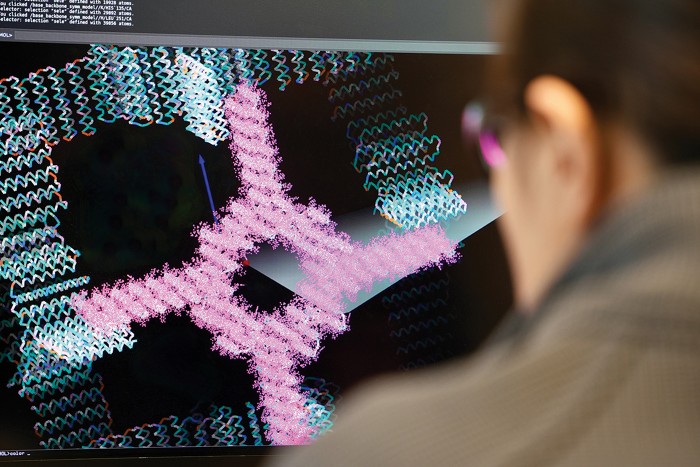Advertisement
Grab your lab coat. Let's get started
Welcome!
Welcome!
Create an account below to get 6 C&EN articles per month, receive newsletters and more - all free.
It seems this is your first time logging in online. Please enter the following information to continue.
As an ACS member you automatically get access to this site. All we need is few more details to create your reading experience.
Not you? Sign in with a different account.
Not you? Sign in with a different account.
ERROR 1
ERROR 1
ERROR 2
ERROR 2
ERROR 2
ERROR 2
ERROR 2
Password and Confirm password must match.
If you have an ACS member number, please enter it here so we can link this account to your membership. (optional)
ERROR 2
ACS values your privacy. By submitting your information, you are gaining access to C&EN and subscribing to our weekly newsletter. We use the information you provide to make your reading experience better, and we will never sell your data to third party members.
Physical Chemistry
How does the universe hide its solid iron?
Probably not in pure grains, according to one team of rocketeer researchers
by Matt Davenport
January 23, 2017
| A version of this story appeared in
Volume 95, Issue 4

A Japanese research team launched a rocket loaded with lasers and a nucleation chamber more than 300 km above Earth’s surface to investigate how the universe might stow its solid iron. Although the mission didn’t discover interstellar iron troves, the researchers did find one form the element is unlikely to take: pure iron granules (Sci. Adv. 2017, DOI: 10.1126/sciadv.1601992).
Iron-rich particles floating in the expanses between stars likely play a role in catalyzing the universe’s chemical evolution, but scientists are uncertain about the forms solid iron takes in interstellar space. Pure iron particles now seem an unlikely option, according to the research team led by Yuki Kimura of Hokkaido University.
The team evaporated iron atoms within a nucleation chamber that allowed researchers to control temperature and pressure. Flying the chamber in parabolic patterns aboard a rocket allowed the team to emulate the microgravity of space. The famed “vomit comet” aircraft used to train astronauts relied on the same patterns, but rockets can counteract gravity’s tug for longer times.
The team observed pure iron granules forming using a laser interferometer, but such events were exceedingly rare. Only about one in every hundred thousand iron collisions resulted in atoms sticking together and nucleating particles, the team reports.
This low sticking probability surprises Bruce T. Draine, an astrophysicist at Princeton University, although he’s not sure how much the finding tells us about the forms interstellar iron does take. Draine and Kimura’s team think that iron atoms are most likely captured by existing particles, such as silicates and carbonaceous grains, floating through space.



Join the conversation
Contact the reporter
Submit a Letter to the Editor for publication
Engage with us on Twitter